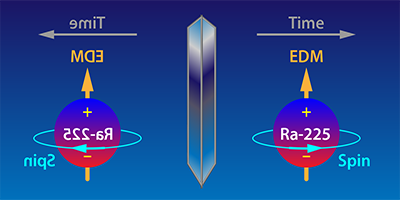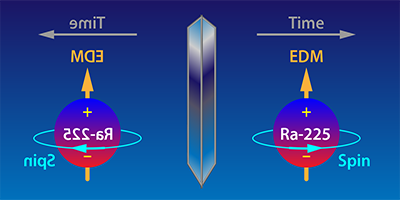Symmetric Radium Atoms
In molecules, atoms and fundamental particles, an electric field can separate electrical charge and induce an electric dipole moment (EDM). But in the absence of a field, charge must be uniformly distributed: An atom with a permanent EDM isn’t consistent with symmetries of the known laws of physics. Zheng-Tian Lu at Argonne National Laboratory, Illinois, and colleagues report a new method to hunt for an EDM in atoms, the discovery of which would signal new physics. They studied radium-225, an atom with a highly distorted pear-shaped nucleus. Theory indicates this atom could be sensitive to symmetry-violating interactions that would produce a finite EDM.
The standard model does actually allow small symmetry violations that are consistent with an atomic EDM. Yet, these mechanisms produce EDMs so small they are impossible to measure. But new theories designed to explain the matter-antimatter asymmetry of the Universe predict stronger forms of symmetry violation. These could result in larger, and potentially detectable EDMs in certain atoms.
Lu and his colleagues used lasers to trap and cool a cloud of radium atoms. With circularly polarized lasers, they aligned the particles’ nuclear spins and then tracked their precession frequency under magnetic and electric fields. Since this precession frequency depends on the atomic EDM, the researchers’ measurement allowed them to place an upper limit on its value of electron-centimeters. This constraint is less stringent than previous ones derived from experiments with mercury, another candidate for a nonzero EDM. But with better trapping schemes and more intense isotope sources, the new method could characterize the EDM of promising isotopes with unprecedented precision.
This research is published in Physical Review Letters.
–Matteo Rini





